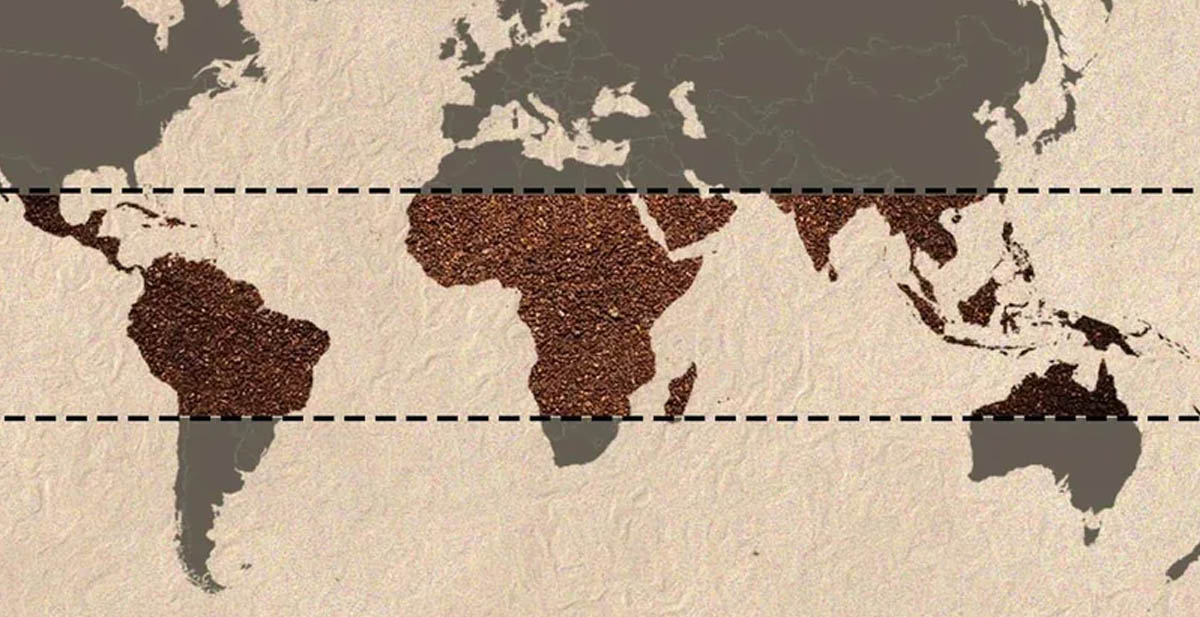Home » Coffee Knowledge » coffee regions » A World of Coffee: Where Your Beans Come From

Coffee isn’t just something you drink—it’s a whole experience. The taste, aroma, and body of your coffee all come down to one thing: where it comes from. Every region has its own unique flavors, thanks to climate, altitude, and how the beans are processed.
So, let’s take a quick trip around the world and break down how a coffee’s birthplace shapes what’s in your cup.
Ever had a cup of coffee that tasted like blueberries? Or one that reminded you of dark chocolate and nuts? That’s not flavoring—it’s all about where the beans were grown.
Coffee is a lot like wine in that way. The environment—things like altitude, temperature, rainfall, and even the type of soil—plays a huge role in how a coffee tastes. This is what people mean when they talk about terroir (fancy word, simple meaning: the land gives coffee its personality).
For example, beans grown in Ethiopia, where the altitude is high and the climate is mild, often have bright, fruity, almost tea-like flavors. Meanwhile, coffee from Brazil, which is lower in altitude and warmer, leans toward rich, chocolatey notes. The same plant, but totally different experiences depending on where it’s grown.
And then there’s the whole processing side of things—how the coffee is handled after it’s picked. Some places sun-dry their coffee with the fruit still on (which brings out sweeter, more complex flavors), while others wash the beans right away for a cleaner, crisper taste. But we’ll get into that later.
Bottom line: If you’ve ever wondered why your morning cup tastes the way it does, the answer starts with where it came from.
Coffee grows in what’s called the Bean Belt—a strip around the equator where the climate is just right. Here are the major regions and what they bring to the table:
Each region has its own vibe. Some are bright and fruity, others are deep and rich. No right or wrong—just depends on what you like in your cup.
So, we know where coffee grows. But here’s the fun part—what happens after the beans are picked? Spoiler alert: A lot.
Dry it, wash it, or let it ferment?
Farmers have different ways of processing coffee, and it totally changes the flavor.
Roasting: The coffee glow-up
Beans start out green and kinda grassy. Then roasting happens, and boom—coffee magic.
Brew it your way
Once it’s in your hands, it’s all about how you like your coffee.
From the farm to your cup, every little step adds something special. And that’s why no two coffees taste exactly the same.
Coffee isn’t just a drink—it’s a journey. From the high mountains of Ethiopia to the volcanic soil of Central America, every cup has a story to tell.
Where it’s grown shapes the flavor. How it’s processed adds personality. And how you brew it? That’s where you make it your own.
So next time you sip your morning coffee, think about the adventure it took to get to your cup. And maybe, just maybe, try something new—because there’s a whole world of coffee out there waiting to be explored.
We care a lot about the experience you have with coffee. A lot of work has gone into getting great beans to your door.
Get Updates From Us When We Create New Ways To Explore Coffee!